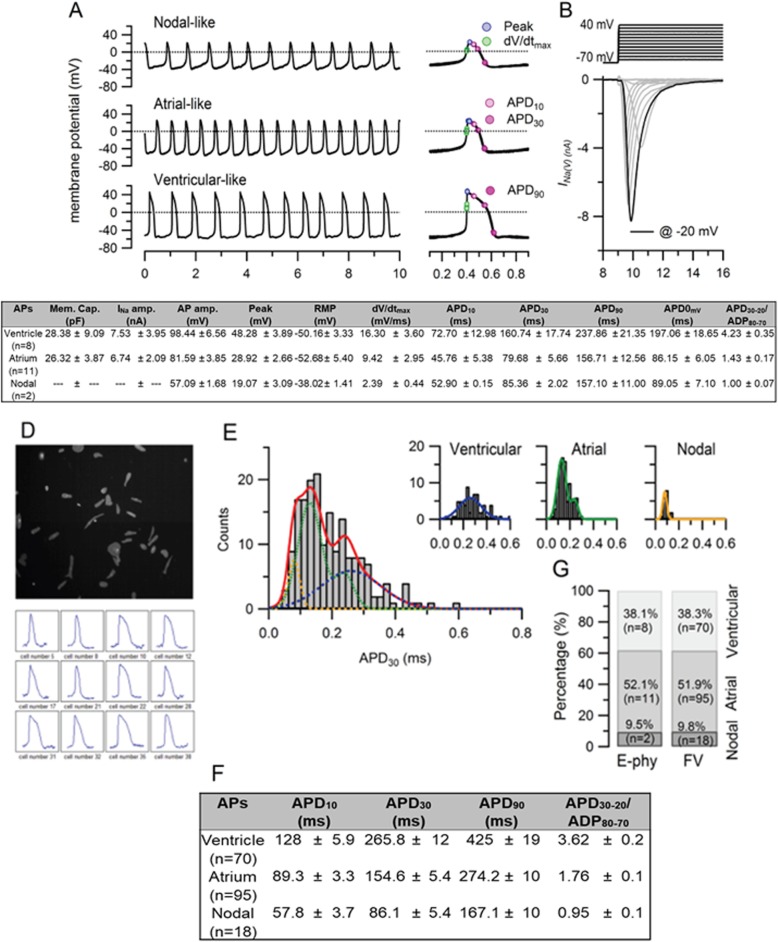Fig. 5.
Cardiac electrophysiology. Spontaneous action potentials (sAPs) were recorded from 21 cardiomyocytes at 35–37 °C using the perforated patch-clamp method. a Recording of resting membrane potential, representative recordings showed 3 major action potentials types: nodal-like (upper), atrial-like (middle) and ventricular-like (bottom). Individual action potentials were aligned at the half-rise of the upstroke phase and shown at an expanded time scale (right). Dotted lines indicate 0 mV. b Representative INa(V) traces as the result of the applied voltage protocol. The black trace indicates the current recorded at − 20 mV. c Summary table displays cell membrane capacitance, the peak amplitude of INa(V) at − 20 mV and sAP parameters. d Low-density seeded hSC-CMs monolayer loaded with the FlouVolt (FV) dye and observed at 520 nm (upper). The relative fluorescent light value was calculated over time for each region of interest (ROI). Twelve representative AP traces are shown here (bottom). e Histograms of APD30 calculated from each ROI with bin size 20 ms. The red line indicates the total of three binomial Gaussian distributions (dashed line) which is the sum of the three histograms of atrial, ventricular and nodal phenotypes shown in insert figures. f Summary table displays sAP parameters obtained from 183 waveforms. g The bar graph shows the percentage of each cell type based on the parameters of sAP recorded by electrophysiological and optical approaches. AP amp., AP amplitude; Peak, peak voltage; RMP, resting membrane potential; dV/dtmax, maximal rate of depolarization; APD, AP duration at different levels of repolarization (APD measured at 10%, 30% and 90% decrement of AP amplitude); APD30-20/ APD80-70, APD ratio during phase 2.

